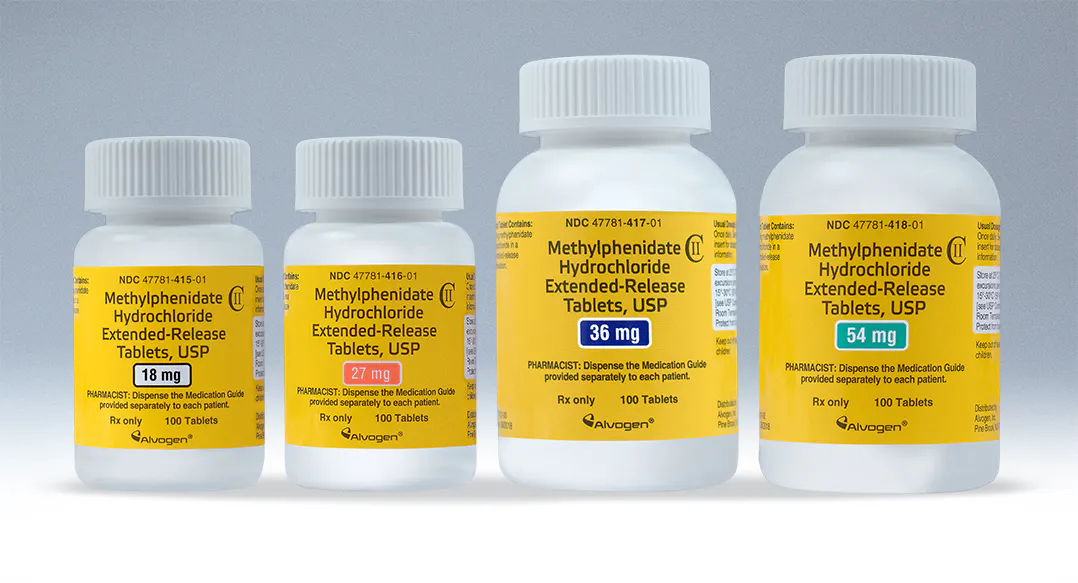 |
|
Several common ADHD medications are contraindicated in patients with a history of angle-closure glaucoma; however, this study found that one of these drugs in particular—methylphenidate—was shown to have a greater effect on the risk of open-angle glaucoma. Photo: Alvogen. Click image to enlarge. |
Attention deficit hyperactivity disorder (ADHD) affects between 5% to 10% of children and 4% of adults, many of whom manage their symptoms with medications including atomoxetine, methylphenidate and amphetamines. These drugs are contraindicated in patients with a history of angle closure glaucoma (ACG) due to their sympathomimetic action, but their role in the development of open-angle glaucoma (OAG) vs. ACG remains unclear in the literature. This recently inspired researchers to conduct their own investigation with a retrospective cohort design and a case-control analysis, strengthened by the use of a large national database.
The study followed a total of 240,257 new users of atomoxetine (6.6% of the cohort), methylphenidate (33.8%) and amphetamines (44.5%) to the first diagnosis of ACG or OAG or until the end of follow-up. The mean age was 45, and 55% of the cohort was female. Four age-matched controls were selected for each case. The researchers adjusted the data for confounders and calculated adjusted incidence-rate ratios (aIRRs).
Throughout the study period of 2010 to 2018, 1,159 glaucoma cases were reported among the cohort. The data showed that regular users of atomoxetine and amphetamines had a higher aIRR for developing ACG compared with non-users (aIRR = 2.55 and 2.27, respectively), while methylphenidate users had a higher aIRR for developing OAG (aIRR = 1.23).
Although methylphenidate was the only drug in this investigation that appeared to increase the risk of OAG, the researchers pointed out in their paper on the study, published in the journal Eye, that, “It is worth noting that in our study, amphetamines and atomoxetine also trended towards increasing the risk of OAG, although this did not reach statistical significance.”
The study authors concluded, “Given the prevalence of ADHD medication use (medically and recreationally), further studies are needed to confirm our findings and investigate associations of ADHD medication use and glaucoma,” while adding that their study merely “suggests a potential signal and not a major public health issue at present.”
Darwich R, Etminan M, He B, Eadie BD. Medications for attention deficit hyperactivity disorder associated with increased risk of developing glaucoma. Eye. May 6, 2024. [Epub ahead of print]. |


